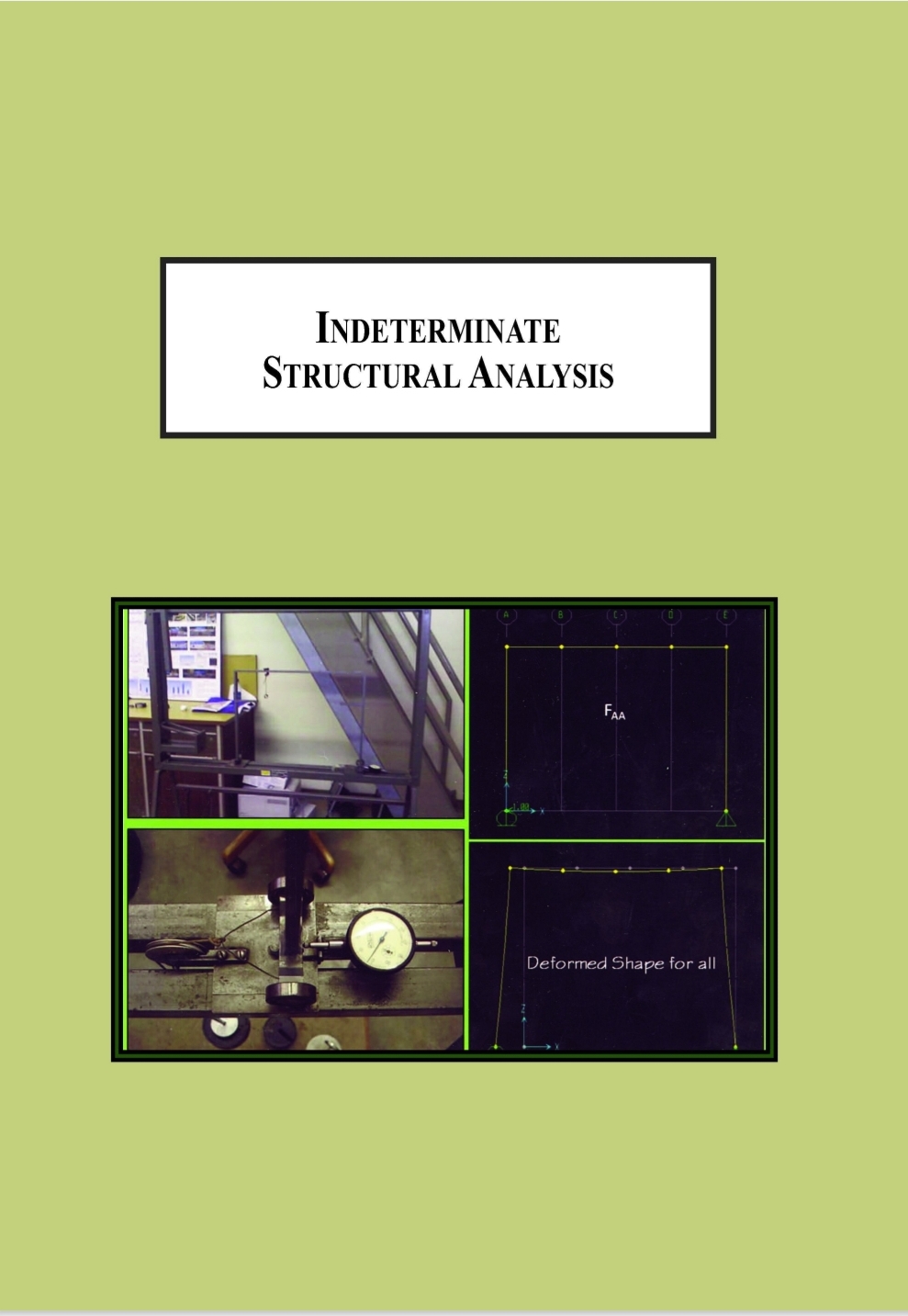Indeterminate Structural Analysis
The title of this book is "Indeterminate Structural Analysis", not "Structural Analysis" as most of the books on this subject are titled. Many textbooks have been written on structural analysis over the past several years with a twofold composition. They essentially deal with analysis of statically determinate structures followed by analysis of statically indeteuninate structures using the force method, displacement methods (classical methods such as slope-deflection and moment distribution) and the stiffness method.
Thus, the material covered in existing textbooks on structural analysis contains more than what is necessary to learn indeterminate structural analysis. As a result, these books become bulky and all their material cannot, and need not, be covered in a single course on indeterminate structural analysis. Moreover, these books rarely include an as-needed discussion of the unit load method, which is arguably the best method to calculate deflections when solving problems by the force method. Hence, the authors set out to create this book. This book covers the analysis of indeterminate structures by force method, displacement method and stiffness method in a total of six chapters.
The first chapter deals with application of the force method to analysis of beam, frame and truss structures. The unit load method is discussed with reference to the analysis of statically indeterminate structures.
A few examples are discussed to illustrate these concepts. The second and third chapters deal with analysis of indeterminate structures by displacement methods. In the
second chapter, concepts of slope-deflection method are developed and applied to beam and frame structures. The third chapter deals with developments of concepts of the moment distribution method. These concepts are then applied to beam and frame structures.
The fourth chapter develops the concepts of the stiffness method. These are subsequently applied to beam structures. The fifth and sixth chapters deal with application of the stiffness method to frame and truss structures. Throughout the book, few but illustrative examples are discussed under each method. The intent is to cover as much material as is needed conceptually with minimal, yet sufficient, examples so the student can understand indeterminate structural analysis methods without being overwhelmed. This way, the book is kept less bulky compared to existing books on structural analysis. In addition, keeping the textbook concise will reduce the price far below that of existing textbooks, saving money for students. We believe this will be a big selling point because the amount of material covered is not compromised in covering the material in a concise manner. This is in addition to the fact that, this book is written by three Professors of Civil Engineering who have had vast experience in teaching and research in the area of structural analysis.
It is hoped that this experience is reflected in the write-up of this book so that it serves our twofold objective. The first objective is that we hope the instructor following this book as a textbook for his/her course on indeterminate structural analysis feels that all the required material is indeed covered in this textbook. Secondly, we hope that the students taking this course find the book and material covered easy to understand. The authors are thankful to Mr. Kyle Anderson and Mr. AnhDuong Le, former graduate students in the Department of Civil and Environmental Engineering at California State University, Fullerton for going through the manuscript and making constructive comments. We also appreciate the editing work done by Mr. Alexander Motzny, undergraduate student in the Department of Civil and Environmental Engineering at California State University, Fullerton.
DOWNLOAD :- HERE
